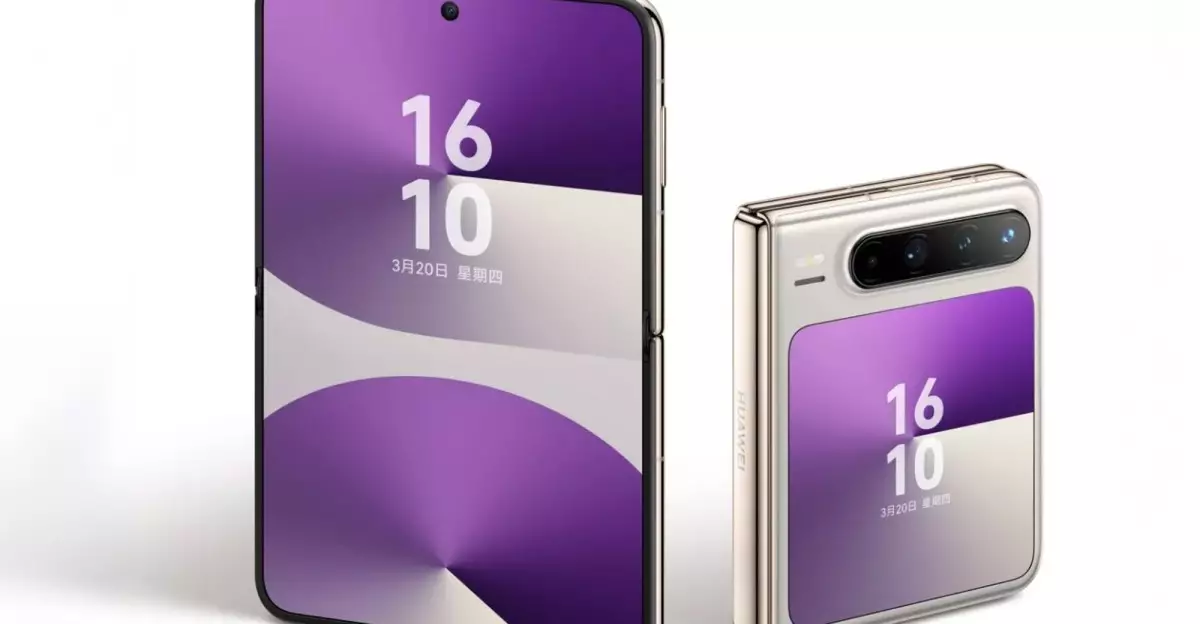Huawei’s Pura X has emerged as a pioneering device in the landscape of smartphones, dramatically shifting conventional expectations of form factors. This innovatively engineered flip phone opens sideways rather than the more typical vertical orientation, presenting a novel approach to mobile technology. The device bears a resemblance to existing models like the Samsung Galaxy Flip and the Motorola Razr when closed but distinguishes itself with a unique, wider profile that boasts a 16:10 aspect ratio screen. This deviation from the norm is not merely cosmetic; it indicates a significant leap toward designs that blend the functionality of smartphones with a tablet-like experience. In a world where portability and usability are paramount, the Pura X pushes boundaries, setting a new standard for versatility.
HarmonyOS Next: Breaking Free from Android’s Shackles
One of the most significant aspects of the Pura X is its departure from the ubiquitous Android operating system. By eliminating Android app compatibility, Huawei is carving its own path with the introduction of HarmonyOS Next. This operating system, distinct from its predecessors, embraces a standalone architecture that signals the beginning of Huawei’s autonomy in software development. Many critics may see this move as a gamble, considering the challenges associated with building a robust app ecosystem from scratch. However, with the support of an increasing number of developers, Huawei seems poised to position HarmonyOS as a fierce competitor in the market. The implication of this shift is profound: it suggests that Huawei is not merely reacting to external pressure—it’s taking the initiative to innovate independently, which could redefine how consumers interact with technology.
Introducing Harmony Intelligence: A Game-Changer in AI Interaction
At the heart of Pura X’s technological advancements is Harmony Intelligence, Huawei’s new AI assistant made possible through the integration of their in-house Pangu model enhanced by DeepSeek technology. This introduction is particularly noteworthy, as it reveals Huawei’s commitment to advancing AI capabilities within its ecosystem. The AI landscape is crowded, with players like Google and Amazon holding substantial market share, but Huawei’s relentless push into this domain could inspire a rethink about what powerful AI can achieve within mobile devices. The skepticism surrounding Huawei’s ambitions is fading, especially with leaders in the tech industry, such as Nvidia’s CEO Jensen Huang, acknowledging the company’s rapid ascent in the AI conversation. This reflects a growing recognition of Huawei’s capabilities and potential influence in shaping the future of intelligent interactivity.
The Price of Innovation: Market Considerations
Currently available only in China, the Pura X is priced at 7,499 yuan (approximately $1,037). While this may appear steep, one must consider the groundbreaking features and hardware that accompany it. In a market that increasingly favors flagship models with premium price tags, the Pura X stands out as a device that could appeal to tech-savvy consumers eager to explore uncharted territories in smartphone innovation. The investment in this new technology is not merely for the device itself but for the promise of transformative experiences and capabilities that accompany it. As competition heats up within the smartphone sector, balancing cost, performance, and consumer demand will be pivotal for Huawei’s continued success.
Anticipating the Future: Are We Ready for Rollable Devices?
In a landscape that is constantly evolving, the Pura X hints at future possibilities that extend beyond just flip phones. Rumors surrounding a rollable phone have also surfaced, igniting excitement and speculation within tech communities. The anticipation for such devices emphasizes a collective desire for dynamic solutions that adapt to users’ needs. Though rollable technology has yet to make a commercial debut, aligning it with the innovations seen in the Pura X reinforces the idea that the smartphone market is ripe for radical reinvention. As consumers begin to embrace more flexible designs and advanced capabilities, we may soon witness a significant shift in how we define our mobile devices. The Pura X could very well be the precursor to an era where the limitations of traditional forms are increasingly called into question.
In essence, Huawei’s Pura X is not just another smartphone; it’s a bold statement about the future of mobile technology, inviting us to consider how connectivity and interaction could continue to evolve in a rapidly changing digital environment.

